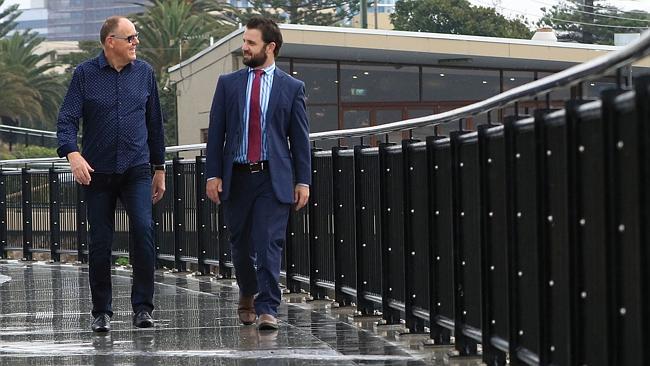IRT Foundation: aged-carer wins with reverse mentoring
Age-care organsation the IRT Foundation discrimates in favour of older workers, and finds reverse mentoring pays off.

Aged-care organisation the IRT Foundation has been promoting workforce ageing since 2014, engaging the community and making sure older people can have a productive career.
The IRT, a not-for-profit in-home aged and nursing care provider that operates in NSW, the ACT and Queensland, joined Age Discrimination Commissioner Susan Ryan last year to find a solution to ageing workforce challenges, and among its initiatives sought approval to actively discriminate and employ an older worker.
The Australian Human Rights Commission highlighted age discrimination in the workforce in a report last year, commenting on the prevalence of age-related bias.
In her Willing to Work report, released last month, Ryan recommended the establishment of a longevity minister; older-worker employment targets in the public sector; national action plans to address employment discrimination and lift the labour force participation of older people; an expanded role for the Workplace Gender Equality Agency; and national education campaigns to dispel myths and stereotypes about older people.
Last year IRT began a reverse-mentoring trial in which former non-profit organisation chief executive Peter Brady, 68, has been sharing his expertise with the national aged-care provider.
Brady says he ran into several roadblocks before finding the IRT role, despite decades of senior experience, and blames it squarely on age discrimination.
“I came to a point a couple of years ago where I’d done enough, I’d celebrated 50 years in the workforce, and I wanted to back off and spend time with my partner and travel and grandkids, but I still had a lot to offer,” Brady says.
“I had a number of situations where I put in applications and didn’t even get to the interview process and I knew my qualifications were above what was required. I could see people rolling their eyes and asking did I really want the job.”
Brady says younger managers and human resources officers often discount older workers because they think they are taking a backdoor into a company and will soon be looking to take the top job.
But he says older workers often are just looking to stay active in the workforce and want to make a contribution without retiring into boredom or obscurity.
A recent Australian Seniors Insurance Agency study found close to half of those over 40 have been turned down for a job because of their age, and three in five people over 50 faced substantial obstacles when trying to change careers.
ASIA spokesman Simon Hovell says older generations face internal workplace challenges when trying to change careers or re-enter the workforce.
Hovell says many baby boomers face considerable age-related barriers in the careers space, with more than 40 per cent admitting they have felt stuck in a rut because a career change, opportunities or promotions are unlikely because of their age.
Close to half the baby boomers surveyed found it took longer than six months to find a new job when making a career move or returning to work, with one in six taking five years or more to find a job.
The federal government’s Intergenerational Report shows that if nothing is done to increase older workers’ participation — including raising the retirement age to 70 — the number of workers in the 15 to 65 cohort supporting those over 65 will shrink dramatically from 7.5 to about 2.5 by 2040.
Those older than 65 also will double in number, meaning there will be a greater demand for aged-care services and more people placing a strain on the welfare system if they are unemployed.
Research has found an increase of 5 per cent in paid employment of Australians over the age of 55 would have a $48 billion impact on the national economy each year.
IRT Foundation manager Toby Dawson, 31, is less than half of his colleague’s age and admits he was guilty of age discrimination before realising how beneficial older workers can be.
“Before I started with this organisation I would have been guilty of it,” Dawson says. “I would have looked at job applications and said ‘you’re too old, you’re just trying to come in the backdoor and take my job’ or ‘you won’t be able to cope with the work’.”
By partnering with the AHRC and learning about positive discrimination, including seeking permission to discriminate, Dawson is trying to set an example for other businesses.
“With Peter we had a worker with 20 years of executive experience including running the ACT Office of the Ageing, which is where we met,” Dawson says. “It’s from that we’ve created this reverse mentorship and we’ve finessed that relationship and he uses his experience and knowledge and brings his enthusiasm.”
Dawson says through a partnership with the AHRC he is trying to position IRT as an exemplar for employing older workers and demonstrate the benefits of reverse mentorships.
He says IRT is creating a program that identifies barriers to employment and helps employers overcome their concerns.
To further promote ageing in the workforce, IRT will host the Career Check Up for Mature Workers Expo in Canberra on June 29.
The expo concept was developed in conjunction with Susan Ryan and will allow employers, financial advisers and government, business, union and volunteering organisation representatives to provide free advice to mature-age workers, help them check on their career and plan for the future.
Participants will be able to undergo skills assessments, receive advice about growing sectors that need workers, where jobs can be found, and skills and credentials required to fill those positions.
Older workers also can learn about age discrimination, discuss their rights regarding flexible work arrangements, network with other mature workers and establish connections with employers.


